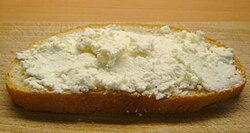From time immemorial, cheese has been the centerpiece of international culinaries, infusing a distinct savor to countless meals across various cultures. One such exceptional variety that has charmed the palates of cheese enthusiasts worldwide is Bryndza, a remarkable sheep milk cheese predominantly produced in Eastern and Central Europe. Its evocative taste, unique texture, and rich nutritional profile make Bryndza a delicacy that stands out amongst the expansive range of global cheeses.
Bryndza, aging back to the 14th century, roots from Wallachian gastronomy. Historically, shepherds used wooden molds to process the cheese, which gave Bryndza its characteristic cylindrical shape. The cheese got its name from the Wallachian term ‘brânză,’ which literally translates to ‘cheese’. The diversity of Bryndza is showcased through its varied recipes reflecting the traditional and regional influences of Slovakia, Poland, Romania, and more.
The initial taste of Bryndza is mildly creamy with a tangy punch that tends to stay, balanced perfectly with the salty undertones added during the fermentation process. The crumbly characteristic due to its sheep’s milk origin gives Bryndza a delicate granular texture, an attribute that becomes more pronounced as the cheese matures. An intriguing facet of Bryndza is the shades of color it presents, which varies from creamy white to deep shades of blue and even green depending upon the process of maturation and the microflora in the sheep’s milk.
A nutrition powerhouse, Bryndza is rich in protein content and packed with essential vitamins and minerals. The cheese is an excellent source of:
- Calcium and phosphorous, which significantly contribute to bone health
- Vitamin B12, an essential nutrient for blood formation and brain function
- Healthy fats, vital for maintaining cellular health
The cheese’s rich composition makes it a wholesome part of many diets. Be it as a standalone cheese board treat or as an exotic ingredient in varied dishes, Bryndza brings an original and enriching flavor keeping in line with the heritage of its origin.

Welcome to our quiz on the topic of ‘Brynza cheese from Belarus’! Gauge your understanding about this popular cheese, its production process, and its role in Belarusian cuisine. Are you ready to cheese it up and learn something new about this savory delight? Begin now!
Unlocking the Unique Qualities of Traditional Brynza Cheese
Emerging from the pastoral tradition of Eastern Europe and Slovakia, Brynza cheese represents a centuries-old morsel of culinary heritage. Trademarked in 2008 by the European Union as a protected designation of origin (PDO) product, Brynza cheese takes pride in its exceptional characteristics dictated by local geographical conditions and historical production techniques. Recognizing the splendor of this cheese, as well as discerning its quality attributes, involves a fine-tuning of the palate and understanding its making process.
Brynza is a semi-soft sheep’s milk cheese, typically produced in a characteristic ring shape or in blocks, with a subtle, slightly piquant flavor and creamy texture. The appearance of genuine Brynza is quite unique. It exhibits a lovely white to pale yellow color and a moist, yet crumbly body. Covered with a delicate, thin natural rind, the cheese is usually soaked in brine, which gives it a slightly salty flavor.
Quality Brynza should be made from 100% pure sheep’s milk sourced from the sheep breeds that graze the Eastern European and Slovakian highlands. This pastoral setting infuses the milk, and consequently the cheese, with a specific set of flavors and aromas unique to the location. Identifying a high-quality Brynza can be determined by tasting its nutty and slightly sour undertone with a bit of saltiness, a characteristic derived from it being stored in a brine solution after being formed into its classic shapes.
One must also pay attention to the period of ripening. Authentic Brynza ripens for a period between 20 and 60 days, affecting the cheese’s flavor and bouquet. The maturation determines its final texture, going from a fresh and creamy consistency to a compact and crumbly body with more mature specimens. This evolvement enhances the tasting experience substantially, bringing out the complex flavors of pasture-sourced milk. So, the next time you encounter a piece of Brynza on the gourmet cheese plateau, brace yourself for a delectable journey down the path of Eastern European culinary tradition.
Demystifying Bryndza: A Deep Dive into Its Ingredients, Properties, and Varieties
Originating from the Eastern European regions, Bryndza cheese is an integral part of local traditions and is now beloved globally. To truly appreciate its unique qualities, it’s essential to gain an understanding of Bryndza’s ingredients, inherent properties, and the wide array of varieties it presents.

The fundamental ingredients in Bryndza are sheep’s milk, salt and, occasionally, cow’s milk. It is the high-quality sheep’s milk, garnered from the free-ranging sheep in the beautiful Carpathian mountains, that imparts Bryndza its unique flavor profile. Producers also use traditional methods to ensure that the cheese retains its authentic flavor and texture. The cheese curds are formed by adding a culture and rennet to the milk, followed by a maturation period under specific temperature and humidity conditions. The result is a soft, creamy, and tangy cheese that is unmistakably Bryndza.
As you delve into Bryndza, you’ll uncover subtleties in texture, flavor, and color that differentiate its various types. Slovak Bryndza, a renowned variant, enjoys the status of Protected Designation of Origin (PDO). It is produced from pure sheep’s milk, maintaining a creamy texture and sharp, slightly tangy taste. On the other hand, Romanian Brânză de Burduf is molded in pine bark, which adds a unique depth to its flavor. Polish Bryndza Podhalańska, another PDO winner, is a blend of sheep and cow milk, with a smooth, crumbly texture and a delicately sweet flavor.
- Slovak Bryndza: Creamy texture, sharply tangy taste.
- Romanian Brânză de Burduf: Molded in pine bark, depth of flavor.
- Polish Bryndza Podhalańska: Blend of sheep and cow milk, delicately sweet flavor.
Regardless of type, Bryndza’s glory truly shines through in traditional dishes, such as halushky and pierogi, and its nutritional profile contributes to its appeal. A rich source of protein, calcium, and B vitamins, Bryndza is a nutritious addition to a balanced diet. So, whether you savor it on a slice of crusty bread, enjoy it in a classic recipe, or simply indulge straight from the spoon, Bryndza cheese is a journey of flavors and textures waiting to be explored.
- In Belarus, the most significant cheese production, including Brynza, occurs in the Grodno region.
- Contrary to what the name may suggest, Brynza cheese does not originate from Belarus, but from the Wallachian region, covering areas of present-day Romania and Moldova.
- Traditionally, Brynza cheese is produced from sheep’s milk and not goat’s milk.
- Due to its high salt content and brine storage, Brynza has a long shelf life.
- Despite its popularity in Eastern Europe, Brynza cheese does not enjoy Geographical Indication (GI) protection in Belarus.
- Brynza is a white, brined cheese, famed for its slightly tangy flavor.
- Brynza cheese, while enjoyed in Belarus, is not a typical ingredient in the traditional Belarusian dish ‘draniki’.
Exploring the Regional Varieties of Brynza Cheese
Originating from Eastern Europe, Brynza cheese is a delectable treat savored by many cheese enthusiasts around the globe. Though it shares a singular name, Brynza is crafted uniquely across different countries and regions, showcasing a rich tapestry of taste, texture, and tradition. Each geographical diversity brings out an exclusive element that defines the cheese, making it distinct from other types.
Brynza first made its mark in the Carpathian Mountains, spread across several European countries that claim their unique versions of the cheese. In Slovakia and the Czech Republic, for instance, Brynza is traditionally made from sheep’s milk, often giving it a slightly tart, robust flavor that’s well-balanced with a creamy consistency. In fact, ‘Slovenská Brynza,’ a specific kind, is protected under the EU’s Protected Geographical Indication status, affirming its cultural significance and high-quality standard.
Meanwhile, in Romania and Moldova, Brynza often incorporates cow or goat’s milk blended with sheep’s milk. The combination contributes to a delightfully unique flavor, which is typically savory and slightly sharp, with a firmer texture compared to its Slovak counterparts. Though these varieties are less known internationally, they offer a rich, authentic experience worth exploring for any gourmand.
- Slovak Brynza – Made from sheep milk, with a creamy consistency and slightly tart flavor
- Moldovan or Romanian Brynza – A blend of cow, goat, and sheep’s milk, offering a savory and slightly sharp taste with a firmer texture
No matter where it’s produced, Brynza consistently offers a rich, artisanal delight, each variety carrying with it a fascinating glimpse into the local milieu it springs from. The regional factor imbues the cheese with its unique taste, making it a fantastic journey through flavors for global cheese lovers and gastronomes alike.
The Art of Enjoying Bryndza: Savoring the Flavor in Every Bite
Few cheeses have the rustic charm and unique tanginess of Bryndza, a sheep milk cheese originating from the Slovak Republic and Poland. Bryndza enjoys the distinction of enjoying a Protected Designation of Origin (PDO) status under European Union regulations. Hence, only cheese produced in certain regions using traditional methods can carry the name ‘Bryndza.’
When considering the best way to consume Bryndza, cheese aficionados are keen on highlighting that temperature plays a significant role. Unlike many cheeses which are best served at room temperature, Bryndza shines when it’s slightly chilled, which enhances the slight tang it is famous for. The traditional method involves spreading it on bread, often complemented with a smattering of butter, making for a savory, creamy experience. Some even enjoy combining it with a dash of honey for an exquisite sweet and salty balance.
Beyond the spread, Bryndza is a versatile cheese, flexible to a multitude of culinary applications. It is a key ingredient in many regional dishes. Some of the standouts include:
- Bryndzové Halušky: Slovakia’s national dish, a hearty meal of potato dumplings served with Bryndza and bacon. The cheese melts into the hot dumplings, yielding a creamy, rich sauce that beautifully complements the salty bacon.
- Bryndzové Pirohy: Similar to Italian ravioli or Polish pierogi, these are dough dumplings filled with Bryndza. They are typically served topped with fried onions and bacon.
Eating Bryndza is, indeed, an exploration of centuries-old traditions from the heart of Europe. Its unique, full-bodied flavor profile and flexible culinary uses make it a joy to discover in a multitude of dishes.
Storing Bryndza: A Guide to Preserving this Unique Cheese
Bryndza, a traditional Slovak sheep’s milk cheese, is renowned for its distinctive taste and creamy texture. But like all artisanal cheeses, proper storage is crucial to maintain its quality and prolong its shelf life. Bryndza’s soft, crumbly texture and high moisture content make it susceptible to spoilage if not stored correctly.
For optimal storage, brined cheeses like Bryndza should be kept in their original liquid, which helps retain moisture and prevent the cheese from drying out. If your Bryndza didn’t come in brine or you’ve already drained it, you can store it in a tightly sealed glass container, preferably in a homemade saltwater solution. This simple solution can be made by dissolving two tablespoons of regular table salt in four cups of water.
Regardless of the chosen storage method, remember that Bryndza, like other cheeses, should be stored at a constant temperature. The ideal temperature range is between 35-45°F (1.6-7.2°C), which can be found in most refrigerators. From a health perspective, it’s generally safe to consume Bryndza within two to three weeks of purchase, but from a quality standpoint, the cheese usually reaches its peak flavor within a week of being opened.
- Keep Bryndza in its original liquid, or in a homemade saltwater solution if not available
- Store in a tightly sealed glass container
- Maintain a constant temperature between 35-45°F (1.6-7.2°C)
It’s worth noting, however, that the flavors of Bryndza can evolve over time, so don’t be afraid to experiment with more extended aging durations. As long as the cheese doesn’t develop any strange odors or discolorations (such as dark or slimy spots), it’s likely still good to eat. Remember that tasting your cheese is the ultimate test of its quality. So trust your senses to guide you in storing and enjoying Bryndza to its fullest extent.
A World of Flavor: Pairing Brynza Cheese with the Perfect Wine
Brynza, a celebrated sheep’s milk cheese, hails from Central and Eastern Europe, specifically from Slovakia, Romania, Hungary, and Moldova. This white cheese, marinated in brine within traditional wooden barrels, offers consumers a unique sharp, salty taste and a slightly crumbly texture. But the question for any passionate cheese and wine aficionados is: what is the perfect wine to pair with Brynza and elevate its distinct character? For those who truly want to appreciate the delicate interplay between the cheese and beverage, certain wines have proven to be compatible partners for this specialty cheese.
Qualifying wines to pair with Brynza involve considering the acidity, body, and sweetness of the wine. The wine’s potential to balance or complement the cheese’s intense saltiness plays a crucial role in this pairing. Firstly, dry white wines, particularly those with a high mineral content, act as a balanced counterpart. The often crisp, refreshing acidity of these wines, such as a traditional Sauvignon Blanc or a steely Chablis, can cut through the savory richness of Brynza, offering a pleasing contrast. Secondly, medium to full-bodied white wines, which often present an interplay of fruit and oak, such as a well-rounded Chardonnay, can stand well against the strong character of the cheese. Finally, for those who prefer red wines, a light to medium-bodied Pinot Noir, with its soft tannins and mix of fruit and earthy flavors, also makes a suitable accompaniment.
A part of this pleasure, though, is in the experimentation. So while some general guidelines help launch a wine and cheese pairing journey, personal preferences can also lead to exciting and rewarding mixtures. Remember that both wine and cheese are products of their environment or ‘terroir’, and understanding this can deepen the appreciation for these delightful pairings. Taste, appreciate, and remember, wine and cheese are two of life’s greatest culinary pleasures.
Exquisite Flavor Pairings for Brynza Cheese
An iconic cheese of Slovakia and Romania, Brynza has a distinctive profile imbued with a deliciously salty tang and a slight hint of sheep’s milk. This semi-hard crumbly delicacy has been delighting cheese lovers around the world for its unique character. But how to enjoy it at its best? Brynza cheese, as exquisite as it is on its own, is even better when accompanied by certain companion foods that pull out the best of its flavors. Here are some perfect food pairings for Brynza cheese, each creating a culinary symphony of tastes on the palette.
- Fresh fruits: The fruity sweetness of fresh apples, pears, or grapes offers a terrific complement to the savory vibe of Brynza. Their juicy burst of sweetness works to mellow down Brynza’s pronounced salty notes, creating a balanced display of flavor.
- Wine: The best match also must include wine. When it comes to wine, Brynza’s full-bodied flavor pairs well with potent, full-bodied reds like Cabernet Sauvignon or Merlot. These wines offset the saltiness and round out the overall flavor profile of the cheese.
- Breads and crackers: due to its crumbly texture, Brynza is a perfect match with crispy baguettes, artisan bread, or even plain crackers. The crisp crust or surface offers a delightful contrast to the cheesiness of Brynza and absorbs the moistness of cheese.
Experimenting with Brynza and these foods can result in some truly amazing combinations that elevate your cheese-tasting experience to a whole new level. Melt it over a crusty bread slice topped with fresh slices of ripe pear and a drizzle of honey and witness the magic. Or crumble it into a salad filled with your favorite fruits and nuts, to achieve a crunchy, sweet and salty extravaganza. The options are endless; the important thing is to savour the process of discovery and enjoyment.
Unveiling the Rich Culinary Heritage of Bryndza Cheese
The noteworthy fable of Bryndza, a distinctly flavored sheep milk cheese, dates back to the 15th century in Central and Eastern Europe. Owing its name to the Romanian word ‘brânză’, which means cheese, Bryndza originates from a stringent cheese making tradition in the Carpathian Mountains. While Slovakia, recognised by the EU as the sole domain origin of this cheese in 2008, is the most renowned place for Bryndza, it also holds a significant place in the culinary heritage of countries like Romania, Hungary, and Poland.
It all started with the indigenous practice of the Wallachian shepherds. Their ancient nomadic lifestyle, which involved seasonal movement of sheep herding, brought about the birth of Bryndza. It’s a truly labor-intensive creation – the milk is first fermented in wooden vats, then heated before being strained and pressed in cloth sacks. Once it reaches a curd-like consistency, it’s minced and finally mixed with some salt to create the finished product. Its texture is crumbly yet creamy, while its flavor balances between tangy and salty – a signature trait of this culinary masterpiece.
Here is a snapshot of few traditional dishes featuring Bryndza:
- In Slovakia, Bryndza blends perfectly with ‘bryndzové halušky’, a national dish composed of potato dumplings and bits of fried bacon.
- In Poland, it graces the traditional dish called ‘oscypek’, a smoked cheese made of salted sheep milk.
- In Romania, Bryndza beautifully completes the classic ‘plăcintă’, a type of cheese-filled pastry.
Today, Bryndza serves as not just a dairy product, but a culturally significant representative of the regions where it originates from, telling the story of a centuries-old tradition, persistence, and passion for cheese-making.
Exploring the Rich, Tangy World of Bryndza-Similar Cheeses
Considered as Slovakia’s cheese crowning glory, Bryndza is a unique sheep’s milk cheese that has been resonating with cheese aficionados worldwide due to its unique flavor profile. This tart, remarkably crumbly cheese is always an intriguing gastronomic exploration. Yet, the vast realm of cheese offers many more varieties that echo the qualities of Bryndza, showcasing a similar balance of tang and creaminess in their taste.
Renowned for its crumbly texture and robust flavor, Feta, a Greek cheese, stands as the closest Bryndza’s sibling. Produced from sheep’s or a combination of sheep’s and goat’s milk, Feta presents a salty and tangy punch, bearing remarkable similarities to Bryndza. On the other hand, Ricotta Salata, an Italian cheese made from sheep’s milk whey, takes the Bryndza-like robustness further by possessing a firm texture and a deeply nutty flavor. It’s an aging variant of the Ricotta cheese, boasting an erstwhile creamy texture that amalgamates with its rich flavor.
To further explore sheep’s milk cheeses akin to Bryndza, samples from England and France stand out. Among those is the Roquefort, a French blue cheese produced explicitly from sheep’s milk. It provides a sharp and tangy character along with a rich creaminess that mirrors that of the Bryndza. In contrast, the English Lancashire cheese presents youthful freshness and crumbly texture, remarkably in line with Bryndza. While aged Lancashire cheese intensifies its flavor, revealing a robust, tangy taste that marries well with the creamy bitterness of the sheep’s milk.
- Feta – Greece
- Ricotta Salata – Italy
- Roquefort – France
- Lancashire – England
Overall, while Bryndza’s appeal rests on its unique origin and heritage, those interested in indulging in similar flavorful pursuits have various global options at their disposal. Venturing outside this Slovakian delicacy will lead you to an enriching international cheese exploration where different makers put their exclusive spin on sheep’s milk cheese, mirrored in the same characteristics shared with Bryndza.



